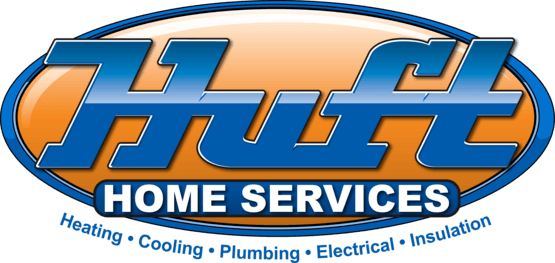Water leaks can be a homeowner’s nightmare. From causing extensive damage to inflating utility bills, hidden water leaks are a menace that needs to be promptly addressed. Often, these leaks are not immediately obvious and can persist undetected, wreaking havoc in the process. However, with the right knowledge and a bit of investigation, you can unveil these sneaky culprits before they cause irreparable harm. In this blog post, we’ll explore nine effective ways to find hidden water leaks and save yourself from potential disasters.
Monitor Your Water Meter
One of the simplest and most effective ways to detect hidden leaks is by monitoring your water meter. When you check the meter, make sure none of your faucets or appliances are running. After a few hours, recheck the meter. If the reading has changed despite no water usage, it’s a clear indication that there might be a leak somewhere in your plumbing system.
Silent Clues: Check Your Water Bill
An unexpected increase in your water bill could signify a hidden water leak. If your water usage habits have remained consistent, yet your bill has spiked, it’s time to investigate. Compare your recent bills to those from the same period in previous years. A significant disparity could point toward an unnoticed leak.
Observe Water Meter Movement During Usage
To pinpoint the source of a leak, conduct a controlled test. Switch off all fixtures in your home that use water, including your washing machine, dishwasher and kitchen and bathroom faucets. Then, observe the water meter as you turn on specific fixtures one by one. A sudden spike in the meter’s reading while a particular fixture is in use can help you identify the culprit area that requires further inspection.
Analyze Your Water Usage Patterns
Being attuned to your water usage patterns can help uncover hidden leaks. If you notice that your water consumption is consistently higher than normal, even after accounting for changes in seasons or guests, it’s worth investigating. This could be an indication of a leak that needs attention.
Employ Food Coloring in the Toilet Tank
Toilet leaks are a common and often overlooked issue. To check for toilet leaks, add a few drops of food coloring into the toilet tank and wait for about 20-30 minutes without flushing. If the water in the toilet bowl changes color without flushing, it suggests that water is seeping from the tank to the bowl, indicating a leak that needs fixing.
Listen Closely for Unusual Sounds
Sometimes, leaks can be detected by paying close attention to unusual sounds. If you hear the sound of running water when no faucets or appliances are in use, it could be an indicator of a hidden leak. Check your walls, floors and ceilings for damp spots or discoloration, which can be a giveaway of water damage caused by a concealed leak.
Conduct a Thorough Visual Inspection
Regular visual inspections of your plumbing system can go a long way in uncovering hidden leaks. Check under sinks, around appliances and along the pipes for signs of moisture, mold or mildew. Look for any corrosion on pipes, as this can also be a sign of a slow leak. Additionally, keep an eye out for water stains on walls and ceilings, as these can provide valuable clues about the location of hidden leaks.
Utilize Technology for Advanced Leak Detection
In the age of technological advancements, detecting hidden water leaks has become even more efficient and accurate. Several innovative tools and gadgets are available that can help you pinpoint leaks with precision. Here are some advanced methods to add to your leak-detection arsenal:
Leak-Detection Sensors
Smart leak-detection sensors can be placed in areas prone to leaks, such as under sinks, near appliances and in basements. These sensors are designed to detect moisture and send alerts to your smartphone or home automation system if they detect any leaks. Some even have the capability to shut off the water supply automatically to prevent further damage.
Infrared Cameras
Infrared (IR) cameras can be incredibly useful for identifying hidden leaks behind walls or under floors. These cameras detect temperature differences, which can indicate the presence of water. When a leak is active, the affected area tends to be cooler due to evaporation. An IR camera can help you identify these temperature anomalies and locate the source of the leak.
Acoustic Leak Detection
This method involves using specialized equipment to listen for the sound of water escaping from pipes. The technology can distinguish between normal pipe noises and the distinct sound of a leak. Acoustic leak detection can be especially effective for locating leaks in underground or hard-to-reach pipes.
Smart Water Meters
Advanced smart water meters not only provide real-time information about your water usage but can also alert you to irregularities that might indicate a leak. These meters can analyze usage patterns and provide insights into potential leaks based on sudden spikes or inconsistencies in your water consumption.
Moisture-Detection Devices
Similar to leak-detection sensors, moisture-detection devices can be placed in key areas to monitor for increased humidity or moisture levels. These devices are particularly useful in detecting leaks in areas prone to condensation, such as crawl spaces or basements.
Digital Plumbing Inspections
Some plumbing companies offer digital camera inspections that involve inserting a small camera into your plumbing system to visually inspect pipes and identify any leaks, blockages or damage. This method is particularly effective for locating hidden leaks in hard-to-reach places.
Preventive Measures to Safeguard Against Hidden Water Leaks
While detecting and addressing hidden water leaks is crucial, it’s equally important to adopt preventive measures that can help you avoid leaks in the first place. By taking proactive steps to maintain your plumbing system, you can reduce the risk of leaks and minimize potential damage. Consider the following measures:
Regular Inspections
Make it a habit to conduct routine inspections of your plumbing system. Check for any signs of corrosion, rust or wear and tear on pipes, joints and fixtures. Early identification of these issues can prevent leaks from developing.
Seal Gaps and Cracks
Inspect your home’s foundation, walls and roof for any gaps, cracks or openings where water could seep in. Properly sealing these areas can prevent water intrusion, reducing the likelihood of leaks and water damage.
Maintain Proper Water Pressure
Excessively high water pressure can strain pipes, causing them to weaken and eventually develop leaks. Install a pressure regulator to ensure that water pressure remains within safe levels.
Professional Maintenance
Periodically enlist the services of a professional plumber to conduct thorough inspections and maintenance. A plumber can identify potential issues, perform necessary repairs and provide guidance on how to prevent leaks.
Properly Dispose of Grease and Debris
Avoid pouring grease, oil and food scraps down your kitchen sink, as these can lead to blockages and leaks over time. Use drain strainers to catch debris and prevent it from entering your plumbing system.
Seasonal Checks
Before the onset of colder months, take measures to protect your pipes from freezing. Insulate exposed pipes and disconnect hoses from outdoor faucets to prevent frozen pipes that can burst and cause leaks.
Regularly Test Water Pressure Relief Valves
If you have a water heater, make sure to test the pressure relief valve regularly. A malfunctioning valve can lead to excess pressure buildup, potentially causing leaks or even explosions.
Mindful Landscaping
Be cautious when planting trees and shrubs near your property. Their root systems can infiltrate and damage underground pipes, leading to leaks. Choose plants with non-invasive root systems and maintain a safe distance from your plumbing.
Upgrade Old Pipes
If your home has outdated plumbing, consider upgrading to more durable and corrosion-resistant pipes. Modern materials, like PEX and copper, are less likely to develop leaks compared to older materials, like galvanized steel.
Educate Household Members
Teach your family members about water conservation and responsible water usage. Avoid overloading your plumbing system by running too many appliances simultaneously, as this can lead to leaks and inefficiencies.
Identify and Fix Any Hidden Leaks in Your Home Today
Hidden water leaks are not only a drain on your finances but also on your peace of mind. By being vigilant and employing these effective leak-detection methods, you can catch these sneaky culprits before they cause extensive damage. Remember to regularly monitor your water usage, perform routine checks and address any leaks promptly. Being proactive about leak detection can save you from unnecessary expenses and headaches, ensuring that your home remains a safe and dry haven. Contact Huft Home Services today to learn more about how you can identify, fix and prevent expensive leaks in your home.




